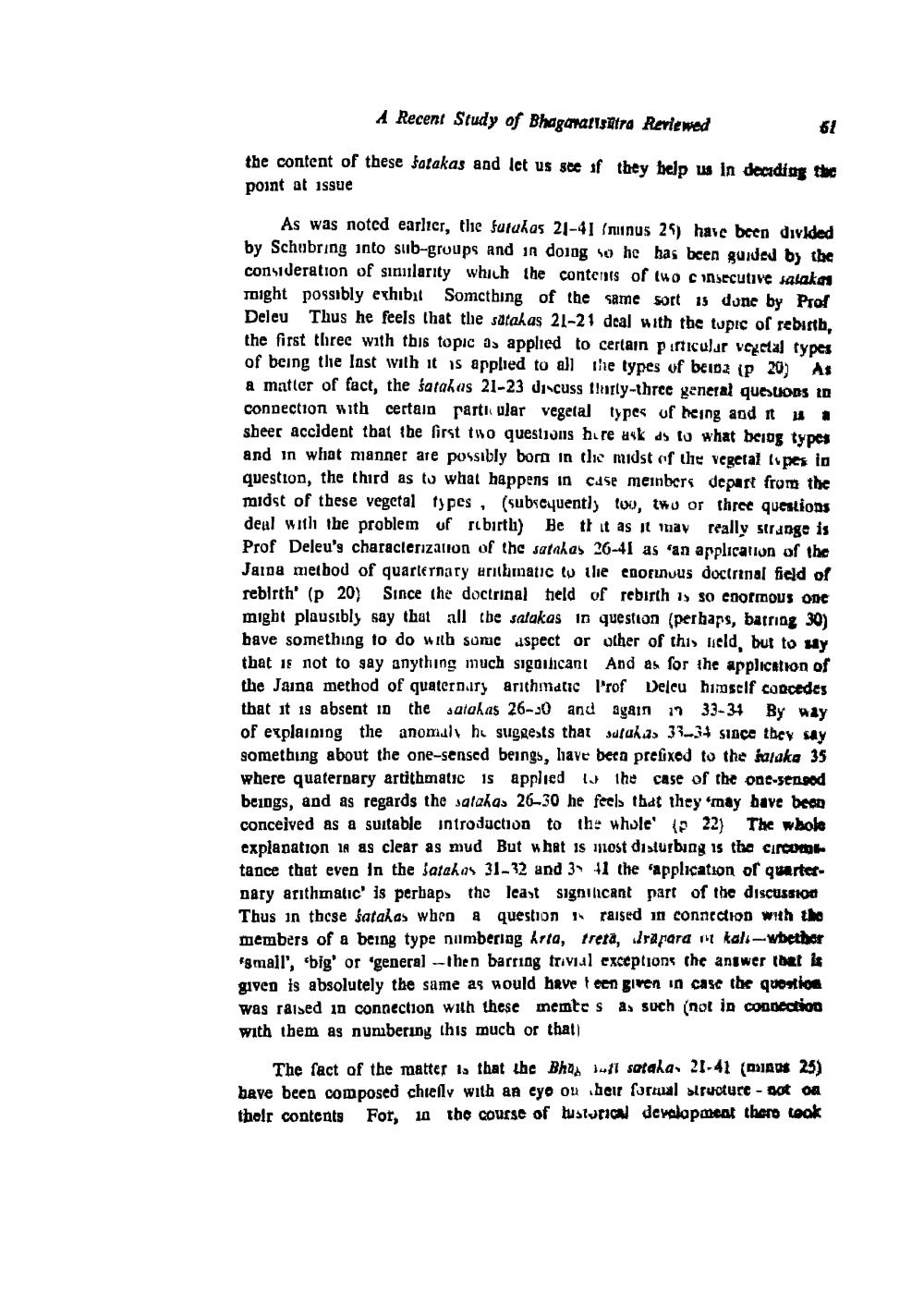________________
A Recent Study of Bhagawattsätra Reviewed
the content of these fatakas and let us see if they help us in deciding the point at issue
61
a
As was noted earlier, the futukas 21-41 (minus 25) have been divided by Schubring into sub-groups and in doing so he has been guided by the consideration of similarity which the contents of two consecutive salakas might possibly exhibit Something of the same sort is done by Prof Deleu Thus he feels that the satakas 21-21 deal with the topic of rebirth, the first three with this topic as applied to certain particular vegetal types of being the last with it is applied to all the types of beina (P 20) As a matter of fact, the satakas 21-23 discuss thirty-three general questions in connection with certain particular vegetal types of being and it sheer accident that the first two questions here ask as to what being types and in what manner are possibly born in the midst of the vegetal types in question, the third as to what happens in case members depart from the midst of these vegetal types. (subsequently too, two or three questions deal with the problem of rebirth) Be that as it may really strange is Prof Deleu's characterization of the satakas 26-41 as an application of the Jaina method of quarternary arithmatic to the enormous doctrinal field of rebirth' (p 20) Since the doctrinal held of rebirth is so enormous one might plausibly say that all the salakas in question (perhaps, barring 30) have something to do with some aspect or other of this eld, but to say that is not to say anything much significant And as for the application of the Jaina method of quaternary arithmatic Prof Deleu himself concedes that it is absent in the satakas 26-30 and again in 33-34 By way of explaining the anomaly he suggests that surakas 33-34 since they say something about the one-sensed beings, have been prefixed to the jalaka 35 where quaternary artithmatic is applied to the case of the one-sensed beings, and as regards the satakas 26-30 he feels that they may have been conceived as a suitable introduction to the whole' (P 22) The whole explanation in as clear as mud But what is most disturbing is the circom tance that even in the Satakas 31-32 and 3 41 the application of quarternary arithmatic' is perhaps the least signincant part of the discussion Thus in these satakas when a question raised in connection with the members of a being type numbering Arta, treta, drapara kali-whether 'gmail', 'big' or 'general-then barring trivial exceptions the answer that is given is absolutely the same as would have teen given in case the question was raised in connection with these memte s as such (not in connection with them as numbering this much or that)
The fact of the matter is that the Bhati sataka, 21-41 (minus 25) have been composed chiefly with an eye ou her formal structure - not on their contents For, in the course of bustorical development there took




